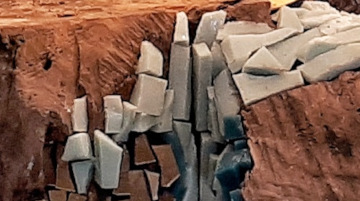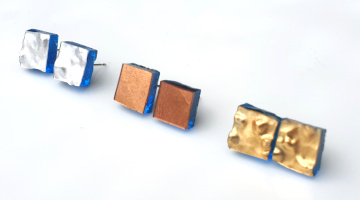VENETIAN NIZIOLETO
The only road signs you can find walking around Venice are called “nizioleti” (Venetian term which means “sheets”).
The nizioleti are wall paintings painted on the plaster of the buildings and they show names, directions and street numbers.
The appearance of these atypical street signs is unmistakable: they appear as white squares (this is why there is the reference to the small sheet) bordered with black and they contain letters, numbers and arrows painted by hand in black thanks to the use of molds.
In the Serenissima Republic, the official language for all legal and administrative documents, as well as that of literary works, was Venetian and the names of the places written on the "nizioleti", white rectangles of lime, which are found on the walls of the streets about two meters high. The toponyms often repeat themselves and each of them has, as already mentioned, a precise meaning.
Contact me for availability, requests for customizations and any other information by writing to info@mnmvenezia.com
More info:
Dimensions: 25x60 cm
1cm wooden frame painted black
Letters created in black smalti tiles white
Venetian stucco based on marble powder and lime.
CUSTOMIZE YOUR NIZIOLETO!
Have you ever wandered through Venice and discovered the quantity of Nizioleti on the city's squares and streets? Would you like to have a dedicated one to recreate the same atmosphere at home?
I can do it for you!
I'll help you to choose among hundreds of authentic Nizioleti, indicating the most characteristic and their meaning and history.
Furthermore, the color and the dimensions of 60x25 cm of the work are very close to the originals, but of course they can be changed to your liking by order.
For you personal Nizioleto project WRITE ME to define all details!
The history of the Bancogiro
The long portico called "Bancogiro", near the Rialto bridge was, at the time of the Serenissima, the bank of credit, where the merchants used to meet for their negotiations. The institution of the "Banco di Scritta" or "del Giro" dates back to 1619 and this name derived from the particular organizational method adopted; in fact, the main function of Banco Giro was not to lend money, but rather to pay large sums on behalf of its customers, especially wealthy merchants, for whom it was dangerous to make purchases on the market bringing with them large quantities of money and coins which among other things, they had to be counted on the spot at each transaction.
It was therefore more convenient for businessmen to open an account in one of the banks that worked on the Rialto market every day, and make payments simply by presenting themselves to the banker and delegating him to transfer the requested amount. The banker wrote down the amount to be paid in his records and made the transaction. In this way, the so-called "counter money" was paid (for example, 10 bank ducats corresponded to 12 current ducats) by applying a fast and safe "game round".
Banco Giro quickly became the easiest and safest way to carry out trade operations; everyone could open a deposit of money, more or less consistent, which was registered to his credit and debit of the bank, without any additional expense and with the possibility of withdrawing at any time all the deposited sum, or the necessary part.
Around the Banco Giro there was a thriving economic activity followed by the State, which among other things had established by law that the money deposited was never to be seized, nor whitheld by any judicial authority of the Republic. The Bancogiro del Mercato di Rialto was a real banking institution, which remained in operation until 1811, so efficient as to push important European officials to go to Venice to learn closely how it was organized.
Source: Municipality of Venice, Wikipedia




















